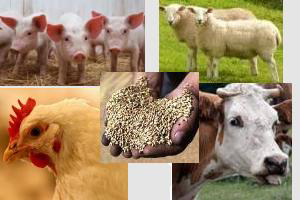Nigeria launches livestock feed mill plant project

Nigerian animal protein consumption is becoming critical. An average person is expected to consume at least 500g proteins of animal sources per day, but our per capita consumption in Nigeria is less than 70g.
In order to reverse this trend, there is the need for more investments in animal feed production. This proposal is out to achieve this objective. It has been said that the realisation of human potential (both mentally and physically) is a function of the quality of the food intake. Promotion of investment in the areas of animal protein production is therefore seen as way of improving the mental and physical capacity of Nigerians.
The project is seen as contributing directly or indirectly to increased productivity. 50% of the cost of producing proteins of animal sources can be attributed to animal feeds. Investment in animal feedstuff preparation will therefore contribute greatly to the development of animal protein supply in the country. The viability of any project is a function of raw materials availability, market potentials and management.
Raw materials for animal feeds ingredients are abound in Nigeria. These include among others oyster shells, bone meal, maize, soya cake, groundnut cake, palm kernel cake and a host of others. Market for animal feeds is also limitless. Animal feeds requirement in Nigeria (both low and high) nutritional planes are not less than 4 million metric tonnes. Not only this animals feed stuff can be exported for a good price. In this regard, anything produced is automatically consumed. The requirement in terms of manpower is not demanding. This is because the production process involved in the preparation of feedstuff is very simple. The project can easily be managed by middle level manpower.
Technical information
The feeds ingredients in mind are bone meal, oyster shells, soya cake and cassava meals, maize, wheat offal’s groundnut cake, etc. Their preparation involves installation of simple machines and the materials are subsequently processed to be sold to poultry farmers. Investors can go further down by compounding the feeds, which are sold directly to animal farms such as poultry farms, turkey farms, pig farms, cattle farms, sheep and goat farms, and fish farms.
To establish the project, the first step is the preparation of comprehensive feasibility report showing technical and financial details of the project. This is followed by procurement of appropriate site and machines. On installation of machines, appropriate personnel are recruited. This is followed by procurement of raw materials for onward processing. Serious minded investors can be guided accordingly on request.
Profitability
The plant has capacity of producing 5 tonnes per day of animal feeds. Profit margin of N5,000 (USD 31.06) per tonne of feed produced has been calculated. Working 200 days a year, annual profit of N5 million (USD 3.1 million) is achievable. Prospective investors can be assisted to successfully establish this project.
Business Day











